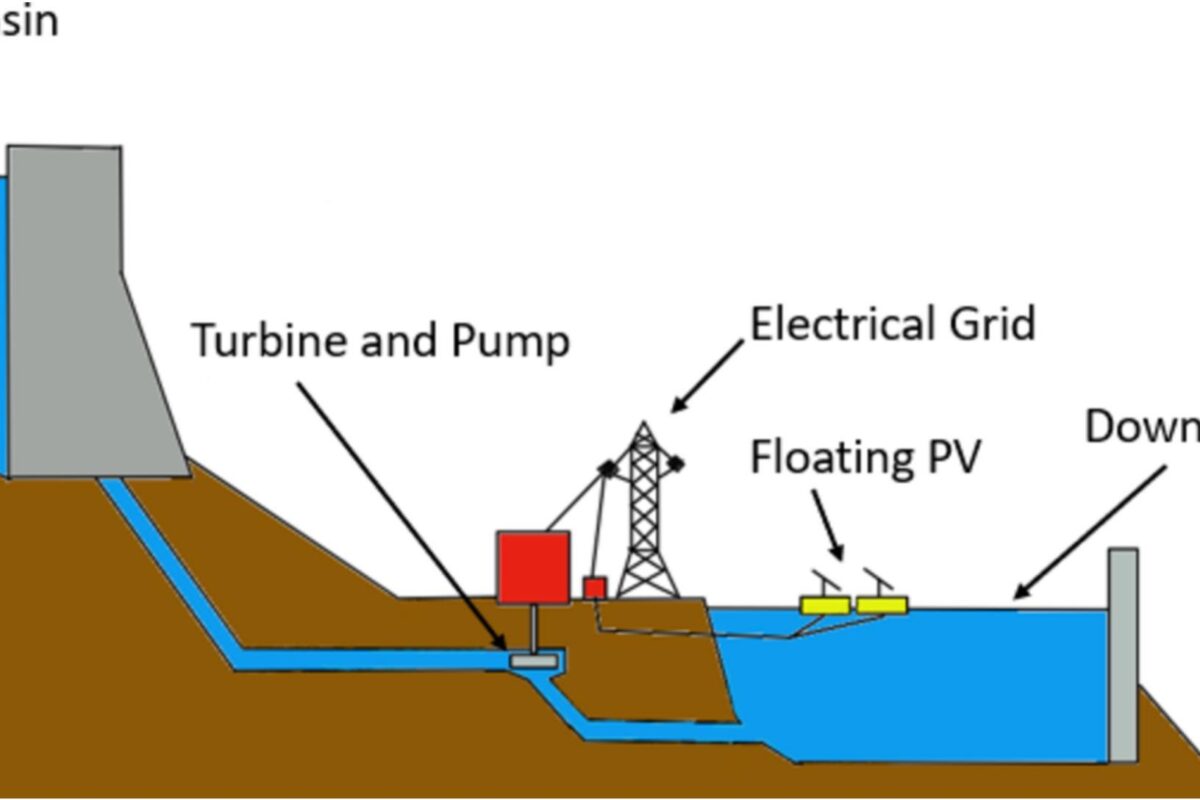Researchers have developed a new energy system consisting of PVT panels, reverse osmosis, reverse electrodialysis and proton exchange membranes. The proposed setup can reportedly produce 18.78 kg/day of hydrogen and 120.6 m3/day of freshwater.
Scientists from Hamad Bin Khalifa University in Qatar have designed a new solar-powered system for brine management and hydrogen production.
Using the Engineering Equation Solver (EES) software, the team simulated the setup and performed a thermodynamic assessment involving energy, entropy and exergy balances.
“If not managed properly, brine poses serious ecological risks to the marine environment. On land, improper brine disposal can cause soil salinization, making agricultural lands unproductive and contaminating groundwater supplies,” the researchers said. “This dual challenge of meeting energy demand and limiting environmental damage highlights the urgent need for integrated solutions that can simultaneously manage brine efficiently and produce clean energy.”
The proposed system is based on a photovoltaic-thermal (PVT) unit that uses the energy produced to power the various system components and the thermal energy to provide cooling. It also includes a reverse osmosis (RO) desalination unit that converts seawater into freshwater and another byproduct. A reverse electrodialysis (RED) then uses the salinity from the rejected RO brine, as well as a tank of low-salinity water, to generate electricity and hydrogen.
Furthermore, a photochlor-alkali process (PCA) converts the remaining brine into hydrogen, chlorine and sodium hydroxide, using the photoactive material Cu₂O. Additionally, the proton exchange membrane (PEM) fuel cell uses hydrogen produced in both RED and PCA to generate electricity. An ejector cooling system uses thermal energy from the PV/T unit to provide cooling for various system components.
Image: Hamad Bin Khalifa University, International Journal of Hydrogen Energy, CC BY 4.0
“During the analysis of the system, the following assumptions are made: the reference temperature and pressure considered during the analysis are 298 K and 101.325 kPa; The surface temperature of the Sun is believed to be 5700 K; the seawater brine consists of NaCl. And the feed streams to the RED system are the solution of water and NaCl; the isentropic efficiency of the pump and compressor is considered 85%; the outlet temperature of the liquid leaving the PV/T system is 65 C; the system operates 8 hours per day due to solar radiation limitations,” the team said.
In addition to various parameters, the academics have determined an irradiance of 800 W/m2. 610 PV/T panels with a maximum electrical generation of 300W have been installed to power the system, converting up to 20% of the solar energy into electricity, while the rest is used for the thermal product. The RP system had a recovery rate of 0.6, the RED used 100 cell pairs, the PEM used 200 cells, and the PCA unit used 2.5 V.
The system was found to achieve energy and exergy efficiency of 66.9% and 23.1%, respectively, with the PVT subsystem exhibiting the highest exergy destruction rate. It could produce 18.78 kg of hydrogen per day and 120.6 m³ of freshwater per day.
“The RED system generates hydrogen at a rate of 0.00041 kg/s, with the production rate increasing with increasing current density, while the PCA system produces hydrogen at a rate of 0.00024 kg/s,” the academics explained . The PEM fuel cell generates 4.9 kW of electricity, but the efficiency decreases as the current density increases.”
They introduced the new concept in “Thermodynamic analysis of a solar-powered integrated system for efficient brine management and hydrogen production”, published in the International Journal of Hydrogen Energy.
This content is copyrighted and may not be reused. If you would like to collaborate with us and reuse some of our content, please contact: editors@pv-magazine.com.
Popular content


